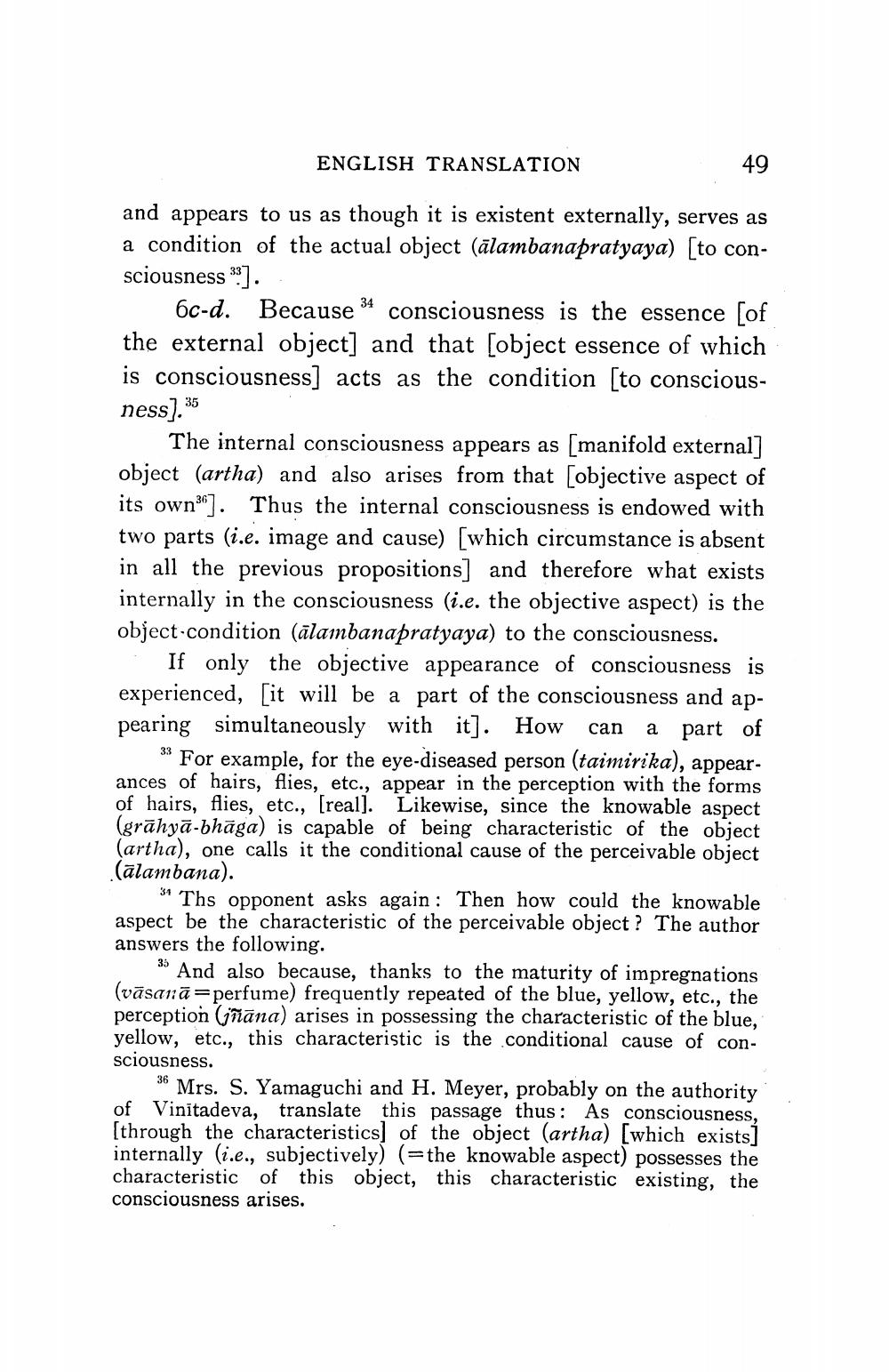________________
ENGLISH TRANSLATION
49
and appears to us as though it is existent externally, serves as a condition of the actual object (ālambanapratyaya) (to consciousness 3]..
6c-d. Because 34 consciousness is the essence [of the external object] and that [object essence of which is consciousness] acts as the condition [to conscious
ness7.35
The internal consciousness appears as [manifold external] object (artha) and also arises from that [objective aspect of its own]. Thus the internal consciousness is endowed with two parts (i.e. image and cause) (which circumstance is absent in all the previous propositions] and therefore what exists internally in the consciousness (i.e. the objective aspect) is the object-condition (ālambanapratyaya) to the consciousness.
If only the objective appearance of consciousness is experienced, [it will be a part of the consciousness and appearing simultaneously with it]. How can a part of
33 For example, for the eye-diseased person (taimirika), appearances of hairs, flies, etc., appear in the perception with the forms of hairs, flies, etc., (real). Likewise, since the knowable aspect (grāhyā-bhāga) is capable of being characteristic of the object (artha), one calls it the conditional cause of the perceivable object (ālambana).
3* Ths opponent asks again : Then how could the knowable aspect be the characteristic of the perceivable object? The author answers the following.
3. And also because, thanks to the maturity of impregnations (vāsanā=perfume) frequently repeated of the blue, yellow, etc., the perception (jñāna) arises in possessing the characteristic of the blue, yellow, etc., this characteristic is the conditional cause of consciousness.
36 Mrs. S. Yamaguchi and H. Meyer, probably on the authority of Vinitadeva, translate this passage thus: As consciousness, [through the characteristics) of the object (artha) (which exists] internally (i.e., subjectively) (=the knowable aspect) possesses the characteristic of this object, this characteristic existing, the consciousness arises.




